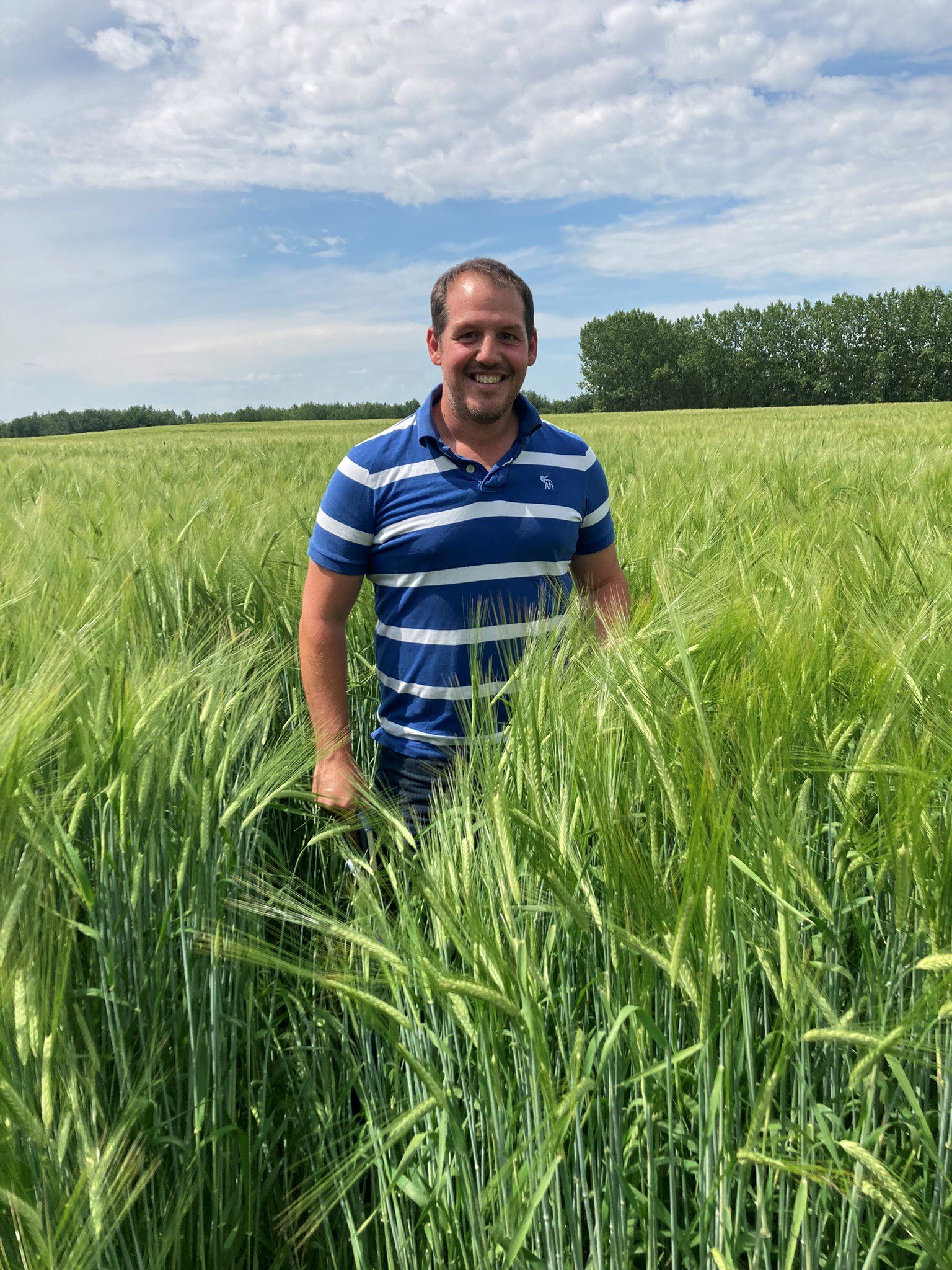“For my Nuffield study tour, I was lucky to spend 10 days in Canada exploring the likes of Ontario and Alberta, before spending 14 days in the States, across Iowa, Illinois, Dakota, Philadelphia, and Delaware. As well as visiting contrasting climates, I also tried to experience areas where the climatic conditions are similar to that of the UK.
Same approach for different outcomes
During all of this, a pivotal moment for me was realising that many farmers were using the same regenerative practice of no-till, but for polarised outcomes. In wet areas, it was using the trash as a mat to absorb the impact of heavy rainfall and no-till to ensure infiltration could be achieved through the profile, whilst reducing erosion risk and nutrient leaching. But conversely, those in dry places were practicing no-till and trash management to capture snow melt and maximise what little moisture they did get. This demonstrates how a change of system can be adapted to different needs, making it clear why regenerative farming has become a long-term approach over there.
Expanding on this, those in low rainfall areas such as South Dakota spoke about ‘effective rainfall’. For those growers, they may have only 15-17” of rain a year, some of which is snow melt. They spoke about residue management and not disturbing the trash, to give soil an ‘armour’. The result of this is effective rainfall – an inch of rain on covered soil could achieve close to 100% of absorption, whereas on uncovered soil, there is a huge risk of it being lost through run-off, evapotranspiration, and wind erosion. Thinking about how regen ag can be utilised to mitigate the impacts of climate was thought-provoking, especially given the extremes we have experienced in the UK lately.
Diversity in rotations
It seemed that the organic farmers I met were able to exercise more diversity within their cropping rotations and cover crop regime, and as a result, explored cultural control methods such as living mulches. Here, the excitement lies in an ability to manipulate C:N through clever use of cover cropping and residue management to build and maintain nutrient levels in the soil. This led to a period of fertility building that could last from a few weeks to more than a year prior to a ‘nitrogen hungry’ cash crop, to ensure it yielded well. Other novel methods of nutrient building and resource management that were very impressive included the ‘solar corridor’ method of cropping, particularly with row crops such as corn, with an inter-row species mixture based around legumes. I’ve certainly boosted my knowledge in this area and its impact on nutrient cycling to help in my agronomic advice to farmers.
Multi-faceted benefits
Thinking more about cover crops, I saw that they really are used as a multi-faceted tool, and contrary to the UK, soil health benefits aren’t always the primary driver for their use. Soybean is an important crop and parallels can be drawn with other pulses that we grow here in the UK. I saw that cover crops were grown before soybeans to provide biomass that could be rolled flat during drilling, or crimper rolled. This provided a useful mat on top of the soil and acted as a cultural control for weeds. This is important take-home for UK growers given the lack of competition and chemistry available for certain legumes species.
But, there were other benefits such as higher pod set. Many growers spoke anecdotally about the benefits of drilling into a cover crop, in that when the soybeans grew through the residue, flowering was initiated higher and pod height therefore increased. Providing lodging was mitigated, this reduced the header losses at harvest and allowed for easier combining conditions.
Minimising disease pressure
Finally, having the residue mat appeared to lower disease pressure, in particular botrytis. This was attributed to an increase in air flow because the canopy isn’t as dense or low to the ground. As a result, some growers have been able to change their varieties and select for different traits, which again adds more diversity into cropping.
Ultimately, it wasn’t just about the nutrient cycling or soil cover for them, there were many other tangible benefits they could realise through this. Conventional growers as well as organic growers were fully committed to regenerative farming practices, some for as many as 25-30 years.
Admittedly we must be careful when drawing agronomic parallels with other countries, but what my study tour did was open my eyes to new ways of thinking on the topic. I didn’t necessarily have preconceptions, but I did have an angle of which I was approaching regenerative agriculture. All in all, this knowledge helps to futureproof my career in agronomy and keep me relevant for the future.”
Chris is an agronomist for CHAP member, Agrii. Read his first guest blog about integrating regenerative agriculture with modern agronomy, here. A summary of Chris’s newfound perspective on regenerative farming practices, capable of contributing to net zero within the UK, can be found in the recording of CHAP’s recent regen ag webinar.
CHAP aims to build networks of leading scientists, farmers, advisors, businesses and academia to understand industry priorities and develop innovative solutions. To be our next guest contributor, e-mail enquiries@chap-solutions.co.uk
Please note, the opinions expressed in this article are the author’s own and do not necessarily reflect the views or opinions of CHAP.












